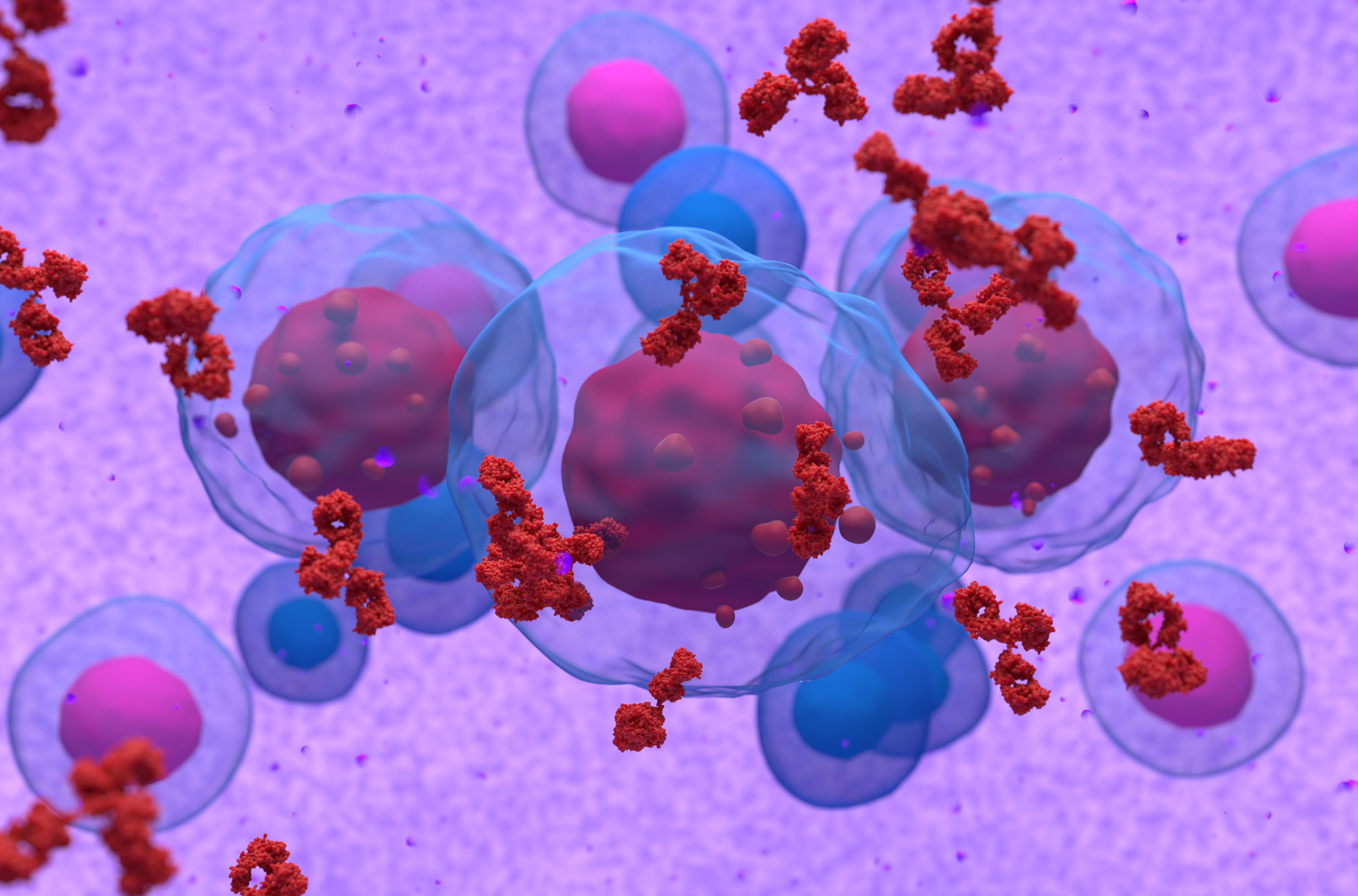News
Article
Bispecific Antibodies Achieve High Response Rates, Tolerable Adverse Effects in Multiple Myeloma
Author(s):
Bispecific antibodies have offered a new treatment approach in relapsed/refractory multiple myeloma, with promising results in preclinical studies for multiple cancers and hematological malignancies.
A recent systematic review published in Cancer Cell International found that T cell-redirecting bispecific antibodies have achieved a high overall response rate (ORR) and tolerable adverse effects (AEs) for patients with heavily pretreated multiple myeloma, although there is still room for improvements.
Image credit: LASZLO - stock.adobe.com

Multiple myeloma is the second most frequent hematological malignancy globally and is characterized by the overproduction of plasma cells and subsequent secretion of a high volume of monoclonal immunoglobulins into the blood and urine. The development of immunomodulatory imide drugs, proteasome inhibitors, and monoclonal antibodies have extended overall survival for this patient population, although most patients still become refractory or intolerant to standard treatments. Additionally, despite growing treatment options, multiple myeloma remains incurable.
Bispecific antibodies have offered a new approach, with promising results in preclinical studies for multiple cancers and, specifically, hematological malignancies. These drugs facilitate tumor eradication by engaging immune cells to a specific receptor of malignant cells, resulting in activation of the immune cells and tumor lysis. With this approach, T cells would be activated independent of antigen presentation on major histocompatibility complex molecules, thus bypassing the typical mechanism of tumor cell recognition.
In their systematic review, investigators identified 11 publications with 9 different specific antibodies. Eight of these were conference abstracts, whereas 3 were published in peer-reviewed journals, and 9 were ultimately included.In 7 of the publications, the plasma-cell recognition target was B-cell maturation antigen (BCMA), while Fc receptor-like protein 5 (FcRH5) was targeted for 1 of the bispecific antibodies and G protein-coupled receptor class C group 5 member D (GPRC5D) was targeted in the other one.
Of the 853 total included patients, ages ranged from 63 to 68 years and 55.4% were men. Among 811 evaluable patients, 71.3% were refractory to triple classes of routine multiple myeloma medications and the median prior line of therapy ranged from 4 to 8. Furthermore, 29.1% of all patients had high-risk cytogenetics, including 17p deletion, t(14;16), and t(14;20).
The efficacy analysis found that 61.2% and 24.3% of all treated multiple myeloma patients with bispecific antibodies achieved ORR and stringent complete response (sCR) or complete response (CR), respectively. The investigators also found that there was no obvious difference between the ORR of bispecific antibodies targeting BCMA (60.8%) and those targeting non-BCMA molecules on malignant cells (62%).
Other researchers have notably found significant results with blinatumomab, a bispecific T-cell engager used in acute lymphoblastic leukemia (ALL). In one meta-analysis, researchers found that blinatumomab resulted in a pooled CR rate of 45% for patients with ALL and 20% for patients with non-Hodgkin lymphoma. In the new analysis, the investigators observed a 77.4% undetectable minimal residual disease (MRD) rate among patients with multiple myeloma receiving bispecific antibodies, while blinatumomab has resulted in MRD negativity among 42% of patients with ALL.
However, the authors also noted that chimeric antigen receptor (CAR) T cells have shown superior benefits in multiple myeloma, with an ORR of 88% and an MRD negativity rate of 79%. Notably, compared with those achieving CR with MRD positive status, patients with multiple myeloma who become MRD negative have longer overall and progression-free survival. Despite a high rate of MRD negativity, the authors said it is unclear whether bispecific antibodies have the potential to elicit long-lasting responses in multiple myeloma.
In the safety analysis, investigators found that adverse effects (AEs), such as cytopenia and infections, are common following bispecific antibody treatment. Non-transformed B cells and plasma cells may also express the targeted antigen on multiple myeloma malignant cells, so host normal B cells could undergo lysis. This predisposes the patients to a high risk of depleted immune cells and infection.
This finding was upheld in the systematic review, which found that infection was the most common non-hematological AE, occurring in 41.3% of all bispecific antibody recipients. Similarly, the risk of infection after blinatumomab therapy ranged from 34% to 44% in patients with hematological malignancies. This concern could be resolved in future bispecific antibodies by improving the specificity through targeting multiple specific antigens on tumor cells.
Cytokine release syndrome (CRS) also commonly occurs after treatment with immunotherapeutic agents, particularly CAR T-cell therapy and bispecific antibodies. The severity of CRS could be associated with the type of underlying malignancy, as well as the type, dose, and schedule of immunotherapy. In the analysis, the overall rate of CRS events was 60.4% with a higher rate of 68.1% for bispecific antibodies targeting BCMA and a lower rate of 55.7% for those targeting non-BCMA molecules.
With a growing number of emerging treatments for multiple myeloma, the investigators concluded that bispecific antibodies offer a particularly exciting option with a high ORR and tolerable AEs, particularly in the heavily pretreated patient population. They strongly recommended the initiation of phase 3 randomized controlled trials with a long follow-up duration comparing the safety and efficacy of current bispecific antibodies with conventional multiple myeloma treatments, as well as further investigation into combination therapies that can improve the survival of treated patients.
Reference
Noori M, Yazdanpanah N, Rezaei N. Safety and efficacy of T-cell-redirecting bispecific antibodies for patients with multiple myeloma: a systematic review and meta-analysis. Cancer Cell Int. 2023;23:193. doi:10.1186/s12935-023-03045-y
Newsletter
Stay informed on drug updates, treatment guidelines, and pharmacy practice trends—subscribe to Pharmacy Times for weekly clinical insights.






